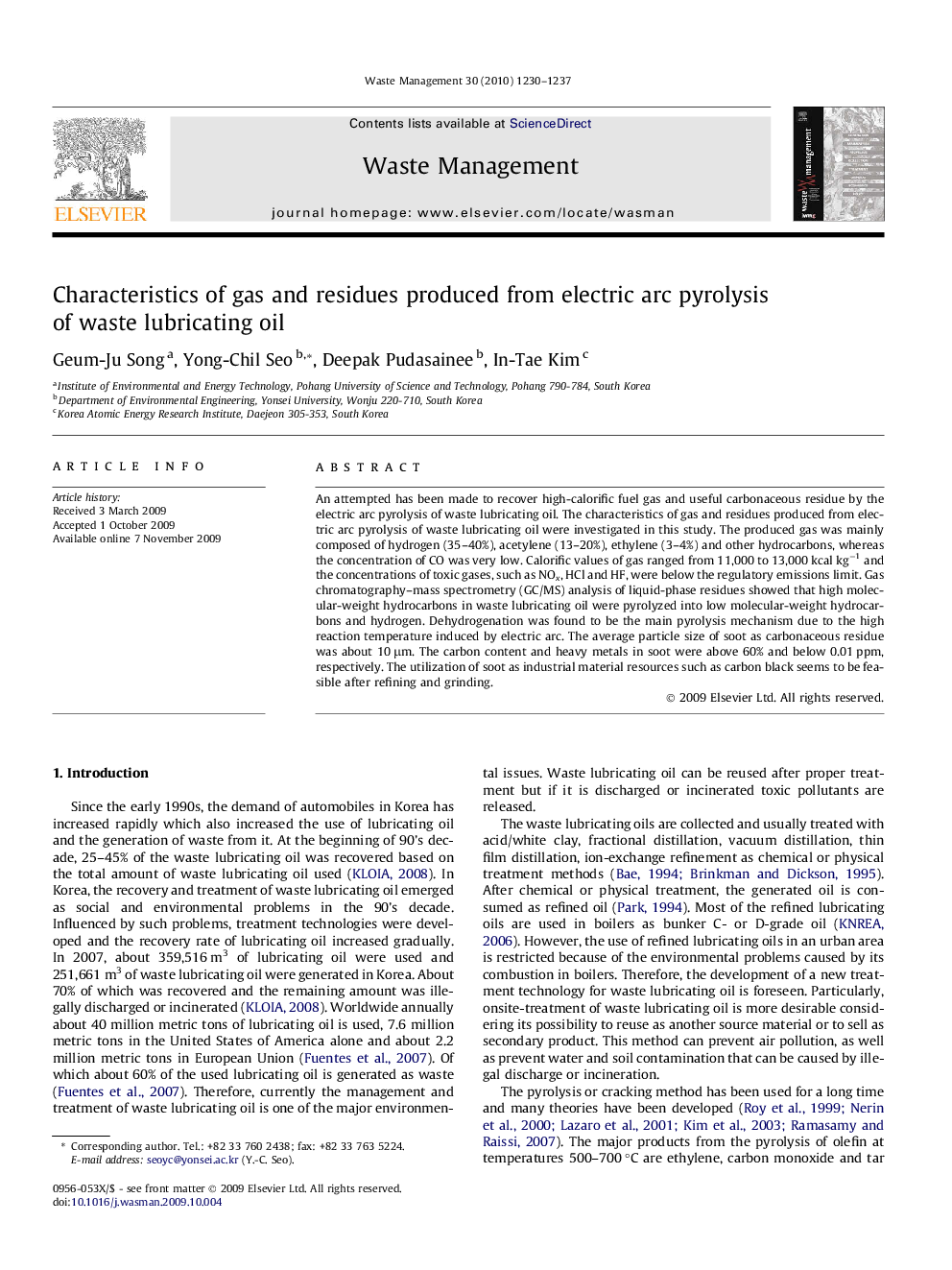| Article ID | Journal | Published Year | Pages | File Type |
|---|---|---|---|---|
| 4472763 | Waste Management | 2010 | 8 Pages |
An attempted has been made to recover high-calorific fuel gas and useful carbonaceous residue by the electric arc pyrolysis of waste lubricating oil. The characteristics of gas and residues produced from electric arc pyrolysis of waste lubricating oil were investigated in this study. The produced gas was mainly composed of hydrogen (35–40%), acetylene (13–20%), ethylene (3–4%) and other hydrocarbons, whereas the concentration of CO was very low. Calorific values of gas ranged from 11,000 to 13,000 kcal kg−1 and the concentrations of toxic gases, such as NOx, HCl and HF, were below the regulatory emissions limit. Gas chromatography–mass spectrometry (GC/MS) analysis of liquid-phase residues showed that high molecular-weight hydrocarbons in waste lubricating oil were pyrolyzed into low molecular-weight hydrocarbons and hydrogen. Dehydrogenation was found to be the main pyrolysis mechanism due to the high reaction temperature induced by electric arc. The average particle size of soot as carbonaceous residue was about 10 μm. The carbon content and heavy metals in soot were above 60% and below 0.01 ppm, respectively. The utilization of soot as industrial material resources such as carbon black seems to be feasible after refining and grinding.
